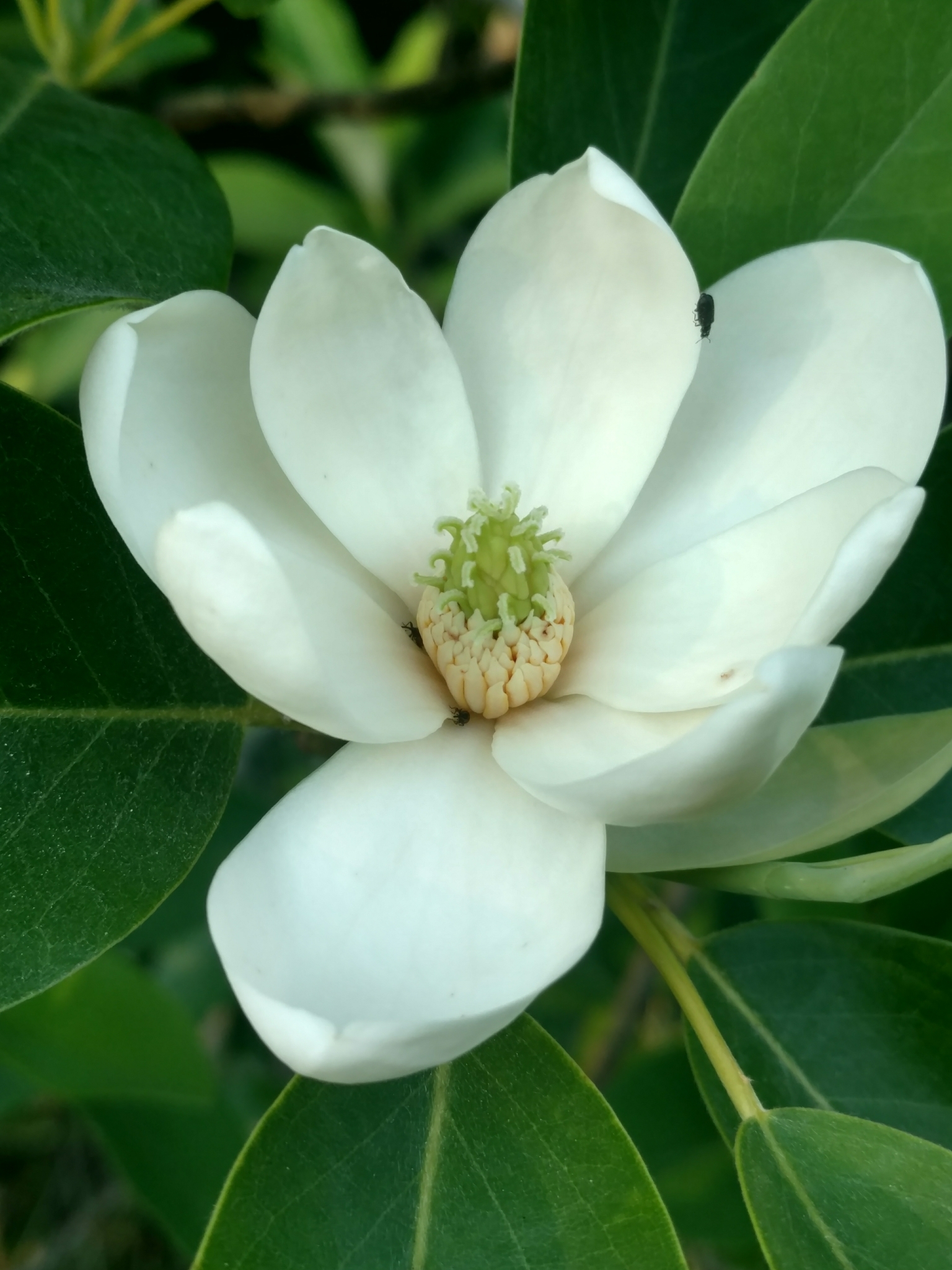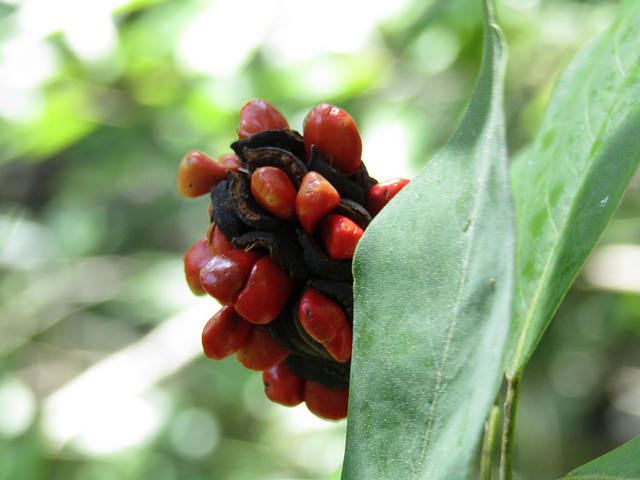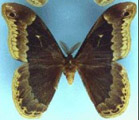Sweetbay Magnolia
Magnolia virginiana L.
Description
Sweetbay magnolia, or simply sweetbay1, is considered to be a small tree or a shrub. It usually grows anywhere from 12-20 feet tall and 3 feet wide but some have also reached heights up to 90 feet1. The bark is pale smooth and gray in color. Sweetbay is semi-evergreen to evergreen with leaves 3-6 inches long and 1-2.5 inches wide, elliptic and green on top and a whitish green color on the underside. They are a very aromatic due to the flowers that bloom on them. They produce solitary, lemon-scented, white flowers that are 4-6 inches wide2. These flowers are bisexual (perfect) meaning they have both the stamen and pistils. They also have anywhere from 9-12 petals that are 2-3 inches. After the flowers, a cluster of dark red fruits are produced which in turn produce bright red seeds. The bloom opens in the morning and closes in the evening for 2-3 days in April, May, June and July.

Sweetbay magnolia flower. @ Wayne Longbottom, Maryland Plant Atlas5

Sweetbay magnolia fruit. W. Longbottom, Maryland Plant Atlas5
Distribution
Sweetbay trees are found throughout open woodlands, shaded woods, and swamp areas. Its range includes much of the southeastern United States including all along the east coast from Florida to Massachusetts, excluding West Virginia, and even in Louisiana, Arkansas, Alabama, Tennessee, and Texas3. It occurs in all counties of the Maryland Eastern and Western Shores7. It likes rich, acidic, moist soils such as sandy, sandy loam, medium loam, clay loam, and clay1. It also likes a partially shaded to full sun. This tree is medium-growing and has no disease or insect issues.

Native distribution of sweetly magnolia. USGS8
Wildlife Importance
Sweetbay feeds Nectar-moths and Nectar-beetles4. Sweetbay is the host plant for Sweetbay Silkmoth (Callosamia securifera) larvae1. Insects attract different bird species, such as Vireos, Kingbirds, Towhees, Northern Flicker and Blue Jays, to the tree as well due to the fact that some birds use the moths or beetles as a food source. Some birds, including Northern Mockingbirds, American Robins, and Eastern Kingbirds, also use the twigs and leaves in making their nests. These birds, as well as gray squirrels, black bear, white footed mice, turkey, and quail eat the fruit/seeds as well. Deer, cattle, and beavers also browse on the leaves and twigs throughout the year3. These animals also help disperse the seeds for new growth.

Sweetbay Silkmoth. Lady Bird Johnson Wildflower Center1.
Economic Importance
The sweetbay tree is important for a variety of reasons. It is used to rehabilitate and bring back to life areas that were used for mining. The leaves, bark, and roots are also used by Houma and Rappahannock tribe people for colds, fevers and other ailments3. The wood is used for making a variety of products such as furniture and home finishing work3. Venetian blinds are one of the products of its wood4.
Threats
These trees are being threatened mainly by humans. One of areas that these trees thrive in are called Pocosins, which are swamp/bog-life areas, and humans are using them for mining, logging, land developments, and agricultural operations3. All of these things can affects the soil nutrients that this plant needs to thrive. These changes can also affect the habitat as well for many different animals that may live in this area and these changes to the land may make the animals flee the area and, without these animals, sweetbay would not be able to spread its seeds around to keep its species thriving.
Interesting Facts
- Sweetbay Magnolia is nicknamed “beaver tree” because early American colonist trappers used the tree as bait for beavers, who ate the roots4.
- It is used as a host plant for caterpillars of tiger swallow butterflies and sweetbay moths4. They lay their eggs on the leaves each year and their caterpillars munch on 1 or 2 leaves each day until they are able to enter metamorphosis.
- Not only are the flowers on this plant aromatic but the wood itself is also aromatic and the leaves have a spicy scent with crushed up.
- They are listed as endangered in New York and threatened in Pennsylvania.
References
- Lady Bird Johnson Wildflower Center: Magnolia virginiana
- Arbor Day Foundation: Sweetbay magnolia
- USDA-Forest Service Fire Effects Information System: Magnolia virginiana
- SFGATE: Unique facts on sweetbay magnolia
- Maryland Plant Atlas, Magnolia virginiana
- Maryland Department of Natural Resources: Creating a wild backyard–native Maryland trees
- Maryland plant Atlas: Magnolia virginiana
- USDA, Forest Service, Vol. 2, Magnolia virginiana
Contributed by J. Hull
